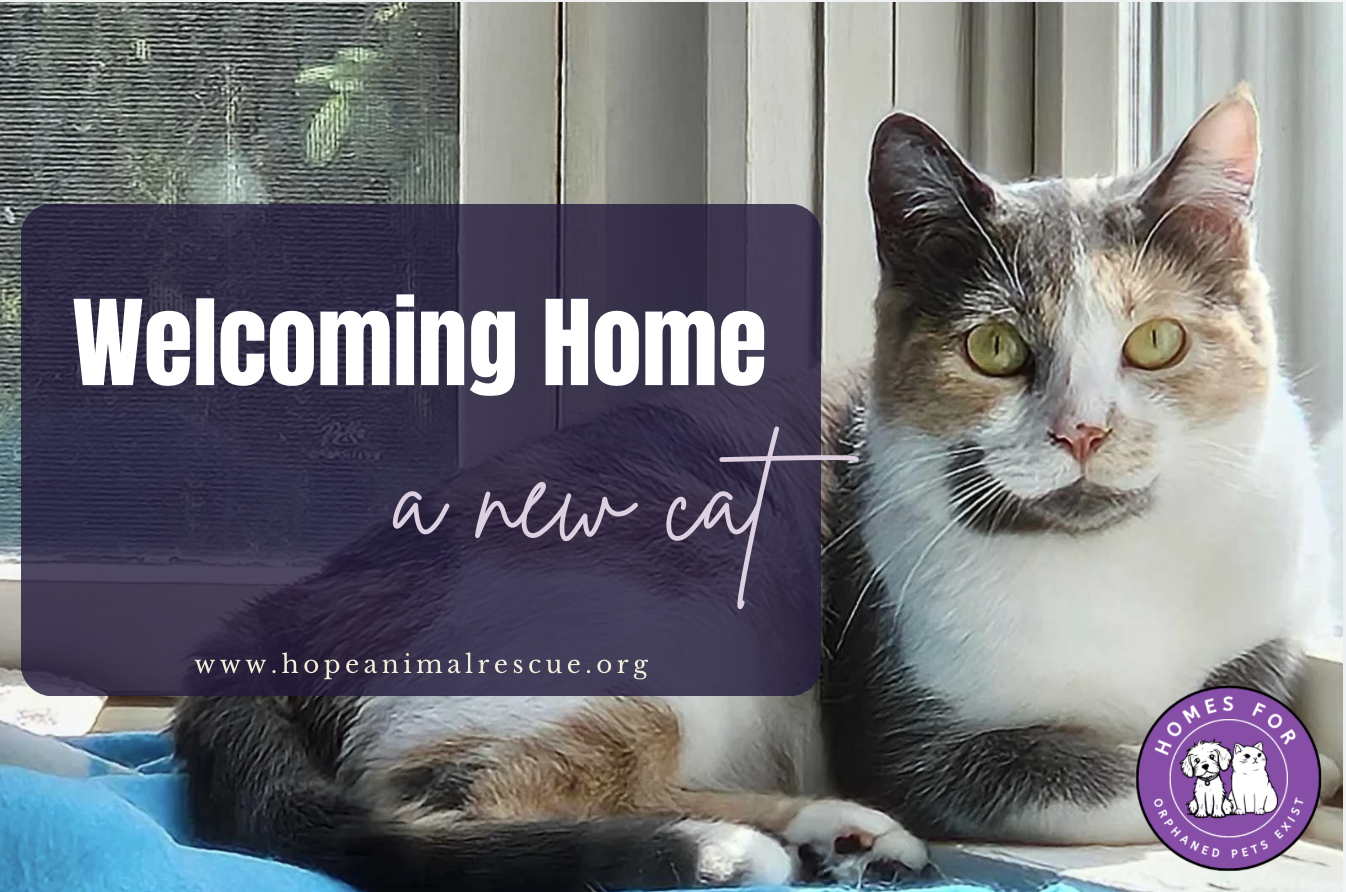The time has finally come that you are welcoming a new cat into your home.
Identification Tag:
Even if your cat will be indoors only, it is important to have an ID tag in the event they get out. Another option is to get your cat microchipped. This is an easy, quick procedure that can be done at your vet’s office, and will last for the cat’s entire life.
Cat Carrier:
The cardboard “going home” carriers are a thing of the past – especially since they easily give out. Consider purchasing a sturdy plastic carrier, as they keep your pet both secure and protected. If you plan to travel on an airplane with your cat, be sure to get an airline-approved cloth carrier that will fit under the seat.
Cat Bowls:
When lookingopt for ceramic, glass, or metal bowls. Plastic can scratch and harbor bacteria which can cause itchy feline acne on your cat’s chin. Also, consider a bowl that’s relatively wide and flat so your cat doesn’t have to press their sensitive whiskers on the edges of the bowl.
Food:
Depending on the age of the cat you are adopting, you will either need to purchase kitten or adult food. It is important to note that kittens need many more calories than adult cats to feed their growing bodies, so they will go through more food and at a faster rate.
As a cat owner, you will need to decide whether you want to feed them wet food, dry food, or both.
According to Cornell Vet, dry food:
- Contains between 6-10% of water.
- May be less palatable to a cat than moist or semi-moist food.
- Depending on the types and quality of the ingredients, may make it less digestible for a cat.
Canned (Wet) Food:
- Has a moisture content of at least 75%.
- Is generally more palatable for cats.
- Has many different variations. (Great for picky cats).
Both types of cat food can be perfectly good options to feed your cat as long as you’re getting high-quality, nutritionally-balanced formulas.
Be sure to look at the feeding guidelines listed on the bag or can of food to help dictate how much and how often you feed. It is important to keep in mind that if you are switching from the food the shelter/rescue is currently feeding, you will have to mix the old food with the new food. (Here is a handout that outlines the process of switching dry food.)
Cat Bed:
Cats love to settle down for a nap, so having a cozy bed ready for them is always a great idea. We recommend getting one that is machine washable, to make cleaning them as easy as possible.
While some cats would be happy with a plush, soft bed, some cats who are more nervous might prefer a covered cave (where they can hide). Once your cat is comfortable in their new environment, chances are, they will want to be with you as much as possible; so consider putting their bed or cave in a highly trafficked area of your house.
Scratching Posts/Pads:
Cats love to keep their claws sharp and ready to go, so be sure to get a couple scratching posts or pads when you are at the store. The key to getting your cat to use the scratching post rather than your furniture (or you) is to make it appealing and enticing. This is why they now sell catnip-infused scratching pads.
Toys:
You can never have too many toys, so we suggest purchasing a variety of toys to see what your cat prefers. Some common favorites include:
- Spring Toys
- Wand Toys (especially with attachments).
- Ball Toys (like the tower of balls).
Litter & Litter Boxes:
Some would say the least enjoyable part of owning a cat is cleaning their litter box. Fortunately, you can make it as enjoyable as possible for both you and your cat depending on the type of litter and box you choose.
We suggest getting a litter box that is large enough for your cat to comfortably turn around in, and one with high sides to keep the litter contained when they dig around. There are many different options out there when it comes to the type of litter box:
- Covered Litter Boxes: Help trap odors, which helps keep the environment smelling tolerable.
- Automatic Litter Boxes: Reduce the number of times you, as the owner have to scoop the litter box.
Whatever you choose, we suggest placing a litter mat by the entrance to the litter box to help trap excess litter.
When it comes to choosing the actual litter itself, there are many options out there, and we suggest doing your own research. If your cat has a type of litter they’re accustomed to using already and you want to swap, it’s recommended to get a small amount of that litter and gradually transition to your preferred variety. If you change the litter cold turkey, your cat may look for other places to do their business.

